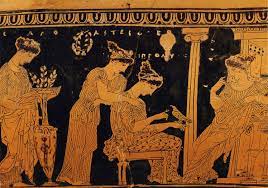
Greek art is notably male-centric in many of its forms. From sculptures displayed in public spaces to pottery gifted from an older man to their apprentice, the art is centered around the male gaze. Since an artist is always conscious of what their audience typically is, and in most cases for the Greeks their audience is men, an artist will purposefully create a piece directly for the male gaze. Battle and hunting scenes on pottery, paintings, and temples are meant for men to enjoy. The reason male statues are portrayed nude is that Greek men find other men sexually appealing. There are a variety of examples of Greek art directed towards the male gaze, but what about women? Unfortunately, there are only a few examples of the types of art that women would be exposed to on a day-to-day basis. I will go over a few of those examples in this exhibit. Types of art that women would be exposed to in their lives are mosaics in the home, paintings, jewelry, pottery, and small votive figures for religious purposes.
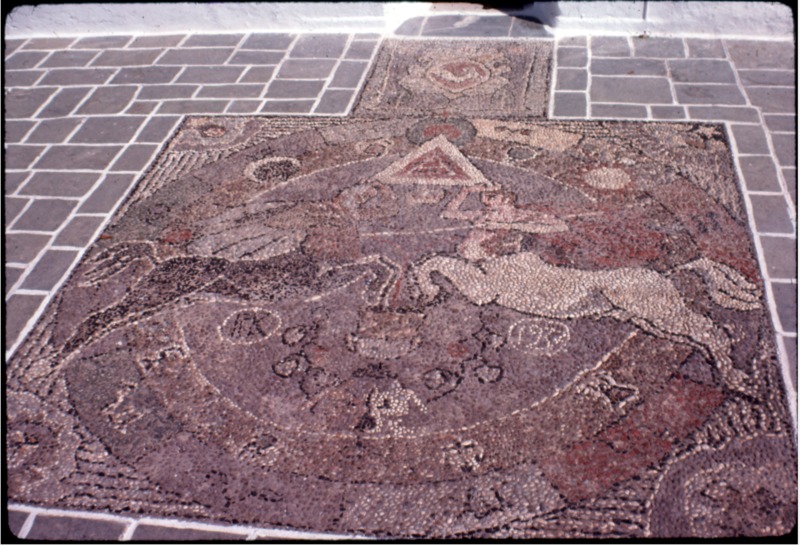
This mosaic is called the mosaic of the centaurs located in the Melos-Adamas Church. The mosaic shows two centaurs facing each other surrounded by geometric shapes, including a triangle above them, a moon to the left, and a sun to the right. Both centaurs are in what is known as the “heraldic position”, which means they are displayed in the position of a crest or symbol. A mosaic is one of the few forms of art a woman can view and enjoy because it can be displayed around the home in the areas that a woman is allowed to go. Which is, technically speaking, anywhere except where the symposia, or meetings, are held. (Middleton 2003)
This image depicts the reconstruction of the dolphin fresco of the queen’s Megaron at Knossos. The fresco shows dolphins as well as other marine life swimming around with decoration around the borders. Marine life as well as scenes in nature were very popular to use as decoration on walls so it is often seen in Greek homes, not just in the Megaron at Knossos. Even though there is no evidence that the room in which this fresco is shown was meant for the queen, it is still an example of the kind of art women would be exposed to in their own home. It was very common to see frescos on the walls of homes all over Greece so it is a part of Greek art that even a woman who only stays home can enjoy this art on their walls. (Koehl 1986)
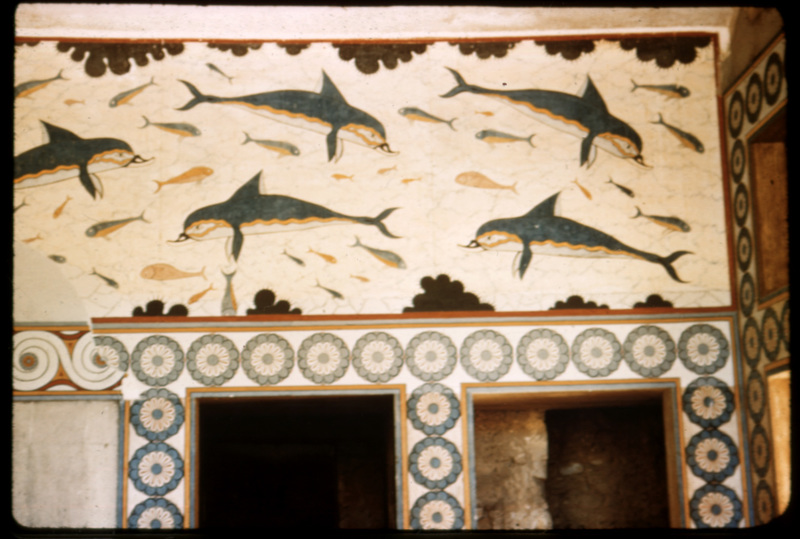
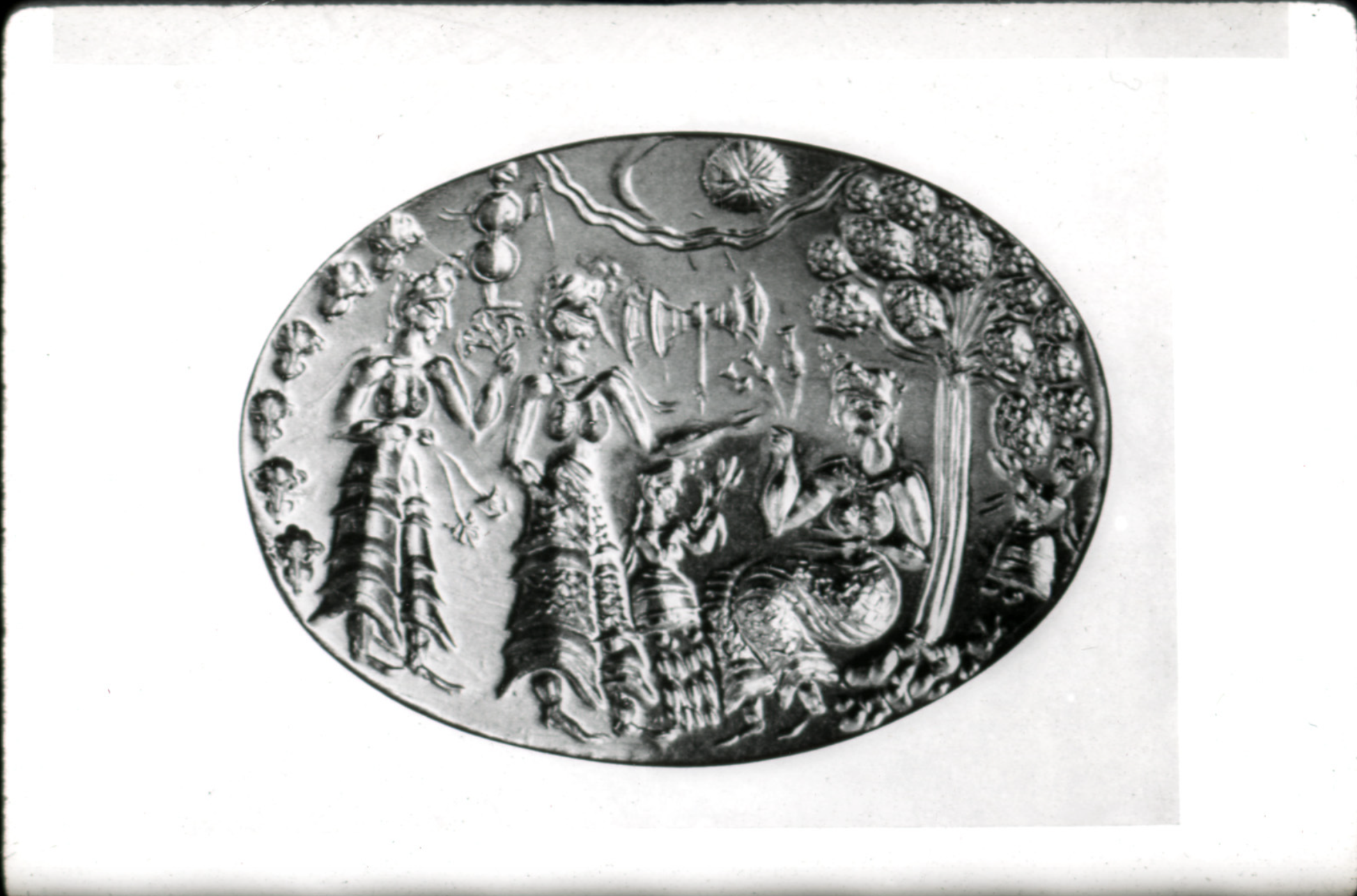
This piece is from a Minoan seal ring used as a form of signature or identification. There are three women depicted in the seal, the two on the left are standing while the other woman on the right is seated. There is also a tree to the right of the third woman as well as floating objects, or decoration, around the seal as well. The women in the seal are Minoan based on what they are wearing but could also possibly be divine women since the Minoans tend to worship multiple goddesses. Although it is not typical for a woman to be wearing a seal ring, it still falls under the category of jewelry. Minoan women are depicted wearing lots of jewelry in paintings and mosaics, so they would be able to appreciate the art on their jewelry since they interact with it in their lives. (Kyriakidis 2005)
This image is of a red-figure lekythos, or a red-figure pot that is used to hold oil for bathing, dating between 375-325 BCE. Part of the bathing and personal hygiene routine was to rub oil into your skin and then scrape it off with a strigil in order to remove the dead skin and dirt from your body. The illustration on the oil vessel depicts two women bathing and another woman washing their hair. It is likely that this specific vessel was meant specifically for a woman because of the bathing scene depicted, but regardless a pot of this type would be readily available in the home and since it is a woman's job to care for the children, which includes hygiene, they would be regularly interacting with a similar object, thus pottery, or more specifically a lekythos, is one of the few forms of art that women are able to enjoy. (Nevett 2001)
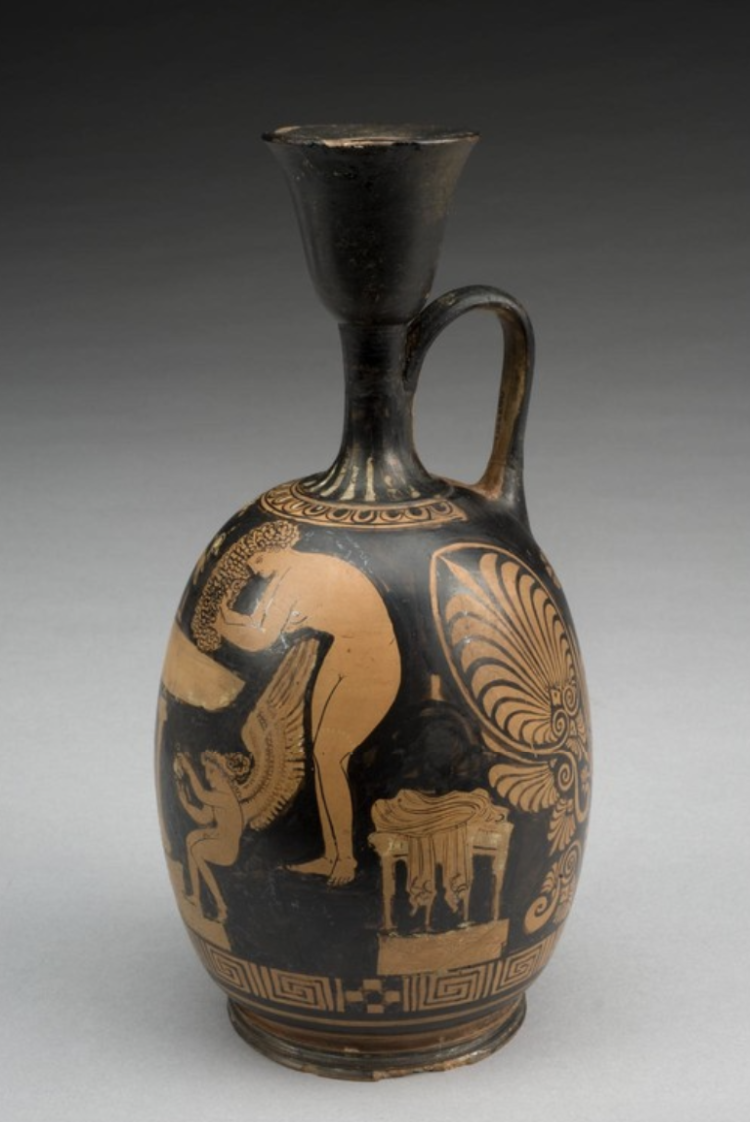
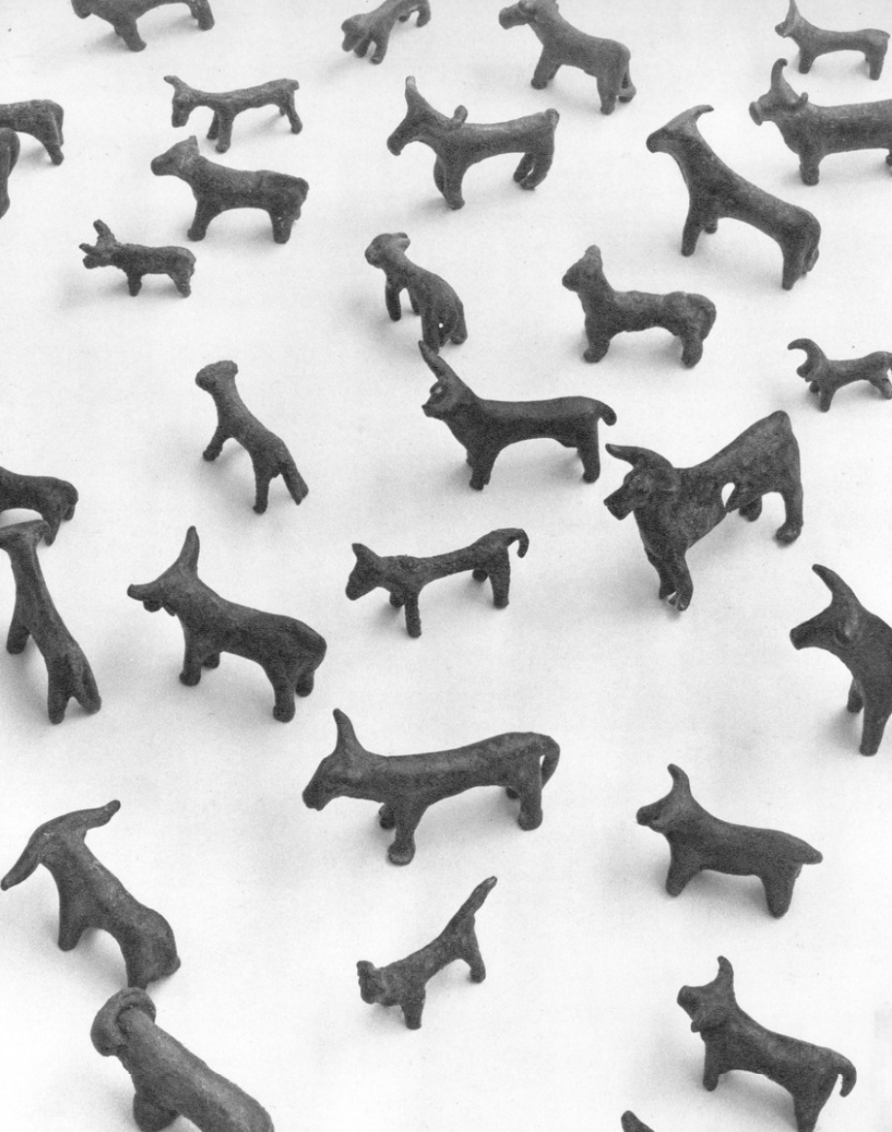
This image depicts a collection of small bronze statuettes found on Crete dating to around 1600 BCE. These figures were often used as gifts or votive figures to be placed at an altar or holy place related to a specific god. These statuettes in particular are small bulls found in a cave that is known to be the birthplace of Cretan Zeus. This cave later became a place of worship for Zeus, so it is not uncommon to find small votive figures in the area of the altar that was set up in the cave. The reason I included these figures in the list of art forms that women would have interacted with is that one of the few reasons they were allowed to leave the house was to go worship. Thus, it is very likely that a woman would have either made or purchased these figures in order to place them at the altar as offerings to stay within the good graces of the gods. Thus, these small figures would have been a central part of women’s religious rituals during this time period. (Rouse 1975)
Meghan Finlay '24